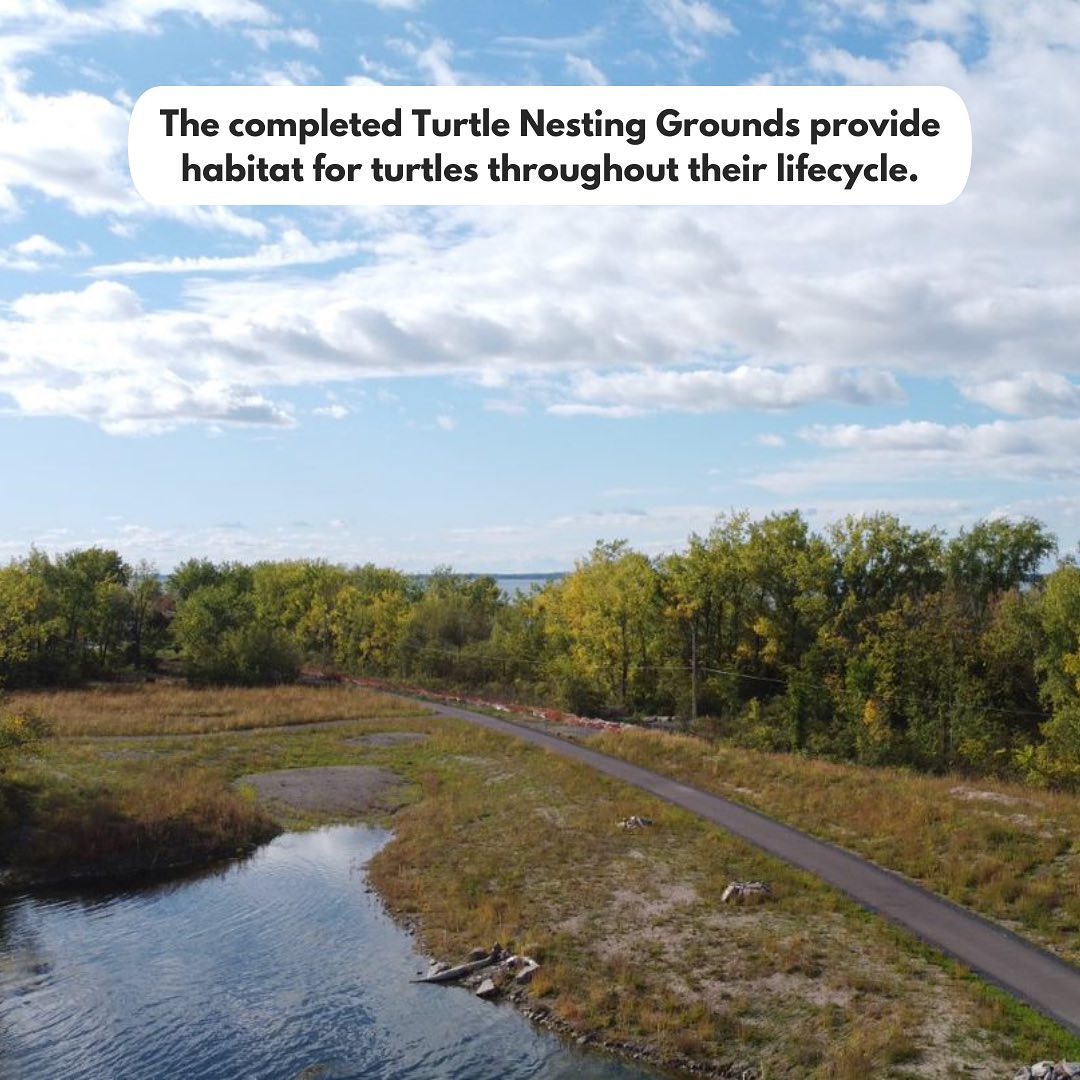Tekakwitha Island and Bay Restoration Project in Kahnawà:ke

(photo : courtesy)
This text was published by the Kahnawà:ke Tourism Office as part of the Visit your neighbouring community insert, published in our paper version of the July 20th edition.
The Kahnawà:ke Environment Protection Office (KEPO) is a unit of the Mohawk Council of Kahnawà:ke (MCK) with the goal of “fighting to protect and better our environment.” Since 2008, a major project for KEPO has been to restore the environment and waters of the Tekakwitha Island and bay area.
By Julie Delisle, Environmental Education Liaison, and Onawa K. Jacobs, General Manager of Environment Protection
The construction of the St. Lawrence Seaway in the 1950s led to the creation of the artificial Tekakwitha Island and bay. The Seaway disturbed the natural balance of the river resulting in long-term environmental damage. The loss of land and direct access to the river also had devastating impacts on Kahnawa’kehró:non (people from Kahnawà:ke).
Despite these detrimental effects, the community has found ways to use the Island and bay for paddling, fishing, swimming, walking, and many other recreational activities. Over the years, these activities became threatened as sediment and aquatic plants accumulated, making it difficult to navigate water and threatening fish and turtles.
In 2020, KEPO initiate the restoration project to address these problems and to increase the beauty, accessibility, and biodiversity of the area. After a number of studies to characterize wildlife habits, modelling the study area, and community consultation, KEPO had designed a sustainable long-term solution. The goals of the project are to improve water flow in the bay and reduce sediment, naturalize the shoreline to improve the landscape for wildlife and community members, and protect and enhance existing natural wetlands.
To date, the project has seen the creation of a turtle nesting ground, a recreational beach, a marsh and linear pond, a bank swallow habitat, and several rest areas and firepits. KEPO has also focused on the removal of invasive species and the planting of indigenous plants, trees, and shrubs.
The Tekakwitha Island and Bay Restoration Project is now nearing completion and we look forward to sharing our final results with the public.